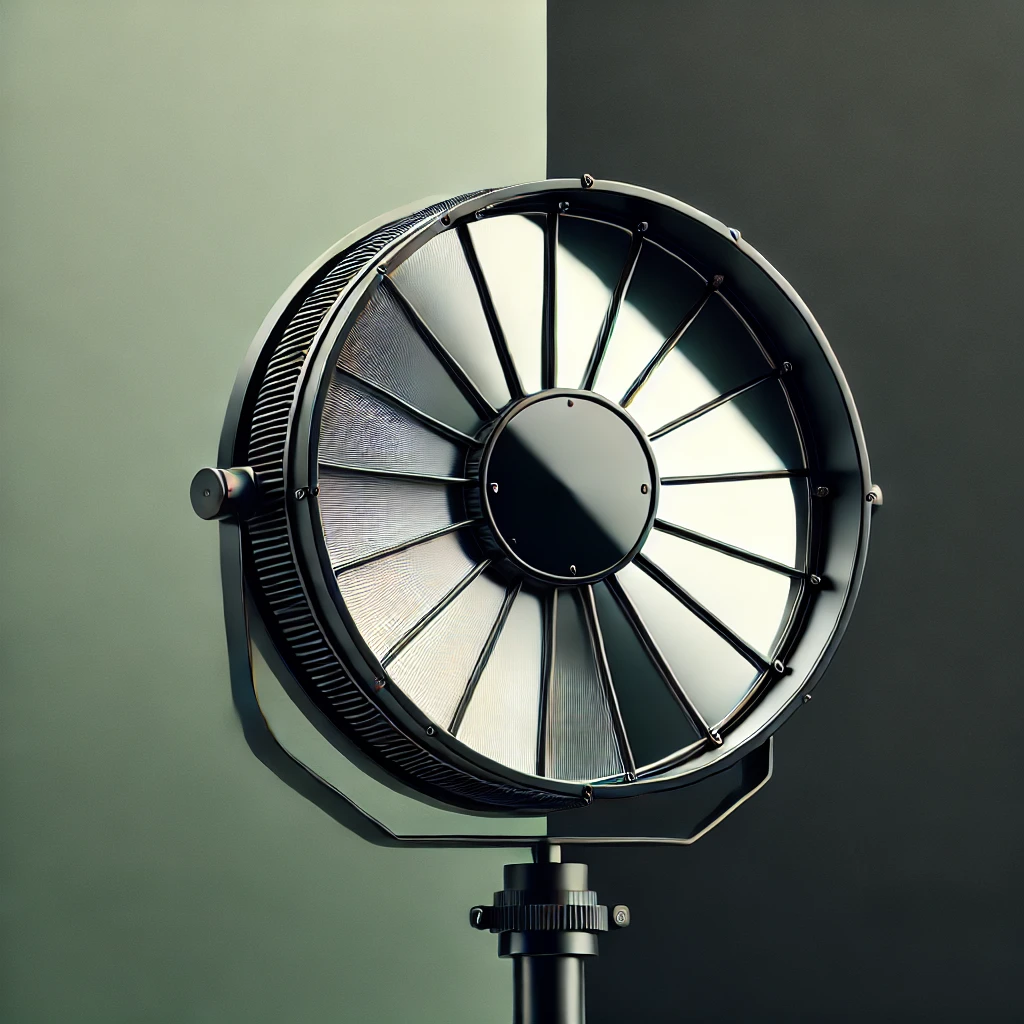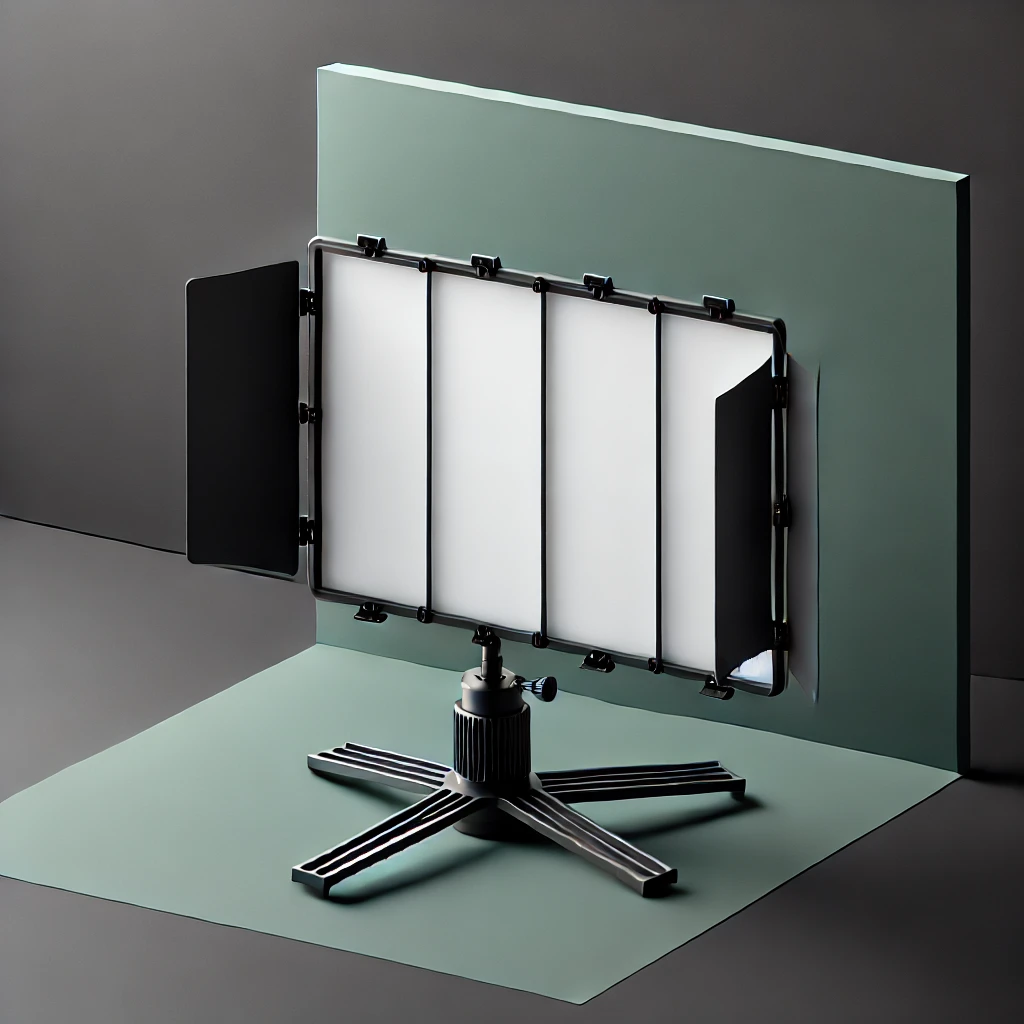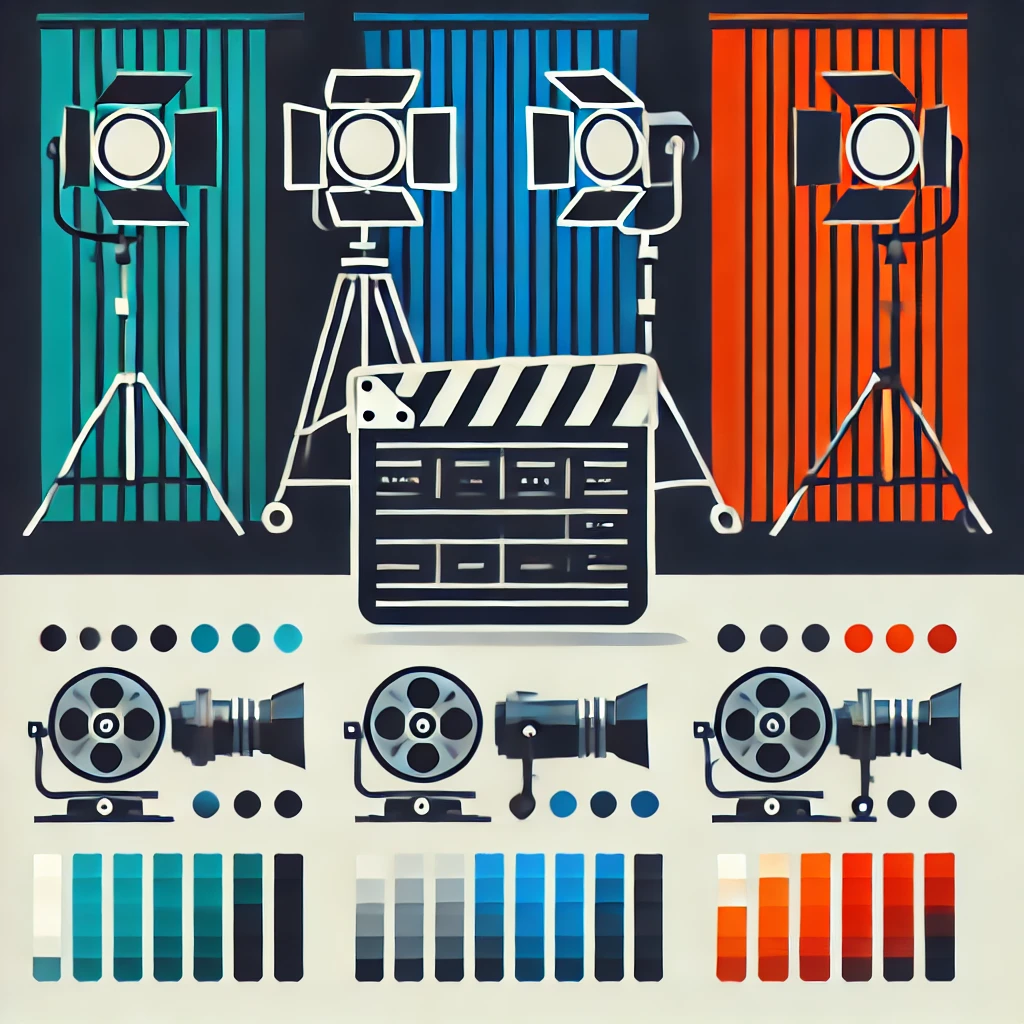Light modifiers have become valuable tools in modern cinematography, transforming ordinary scenes into compelling visual narratives. From the vibrant sets of Nollywood to independent film productions worldwide, the mastery of light modification techniques has become a defining factor in production quality.
What Are Light Modifiers in Filmmaking?
Light modifiers are sophisticated tools designed to manipulate and control various characteristics of light, including its intensity, direction, color, and quality. These essential instruments give cinematographers unprecedented control over their visual narrative, allowing them to shape light in ways that enhance storytelling and create specific moods or atmospheres.
The main role of light modifiers extends far beyond simple illumination. They enable filmmakers to craft precise visual environments that support their narrative goals. When properly utilized, these tools can transform harsh, unflattering light into soft, cinematic illumination, or create dramatic shadows that add depth and dimension to a scene. The ability to control light with such precision has revolutionized modern filmmaking, enabling creators to achieve their artistic vision regardless of environmental conditions.
Understanding Reflectors in Filmmaking

Reflectors
What Are Reflectors?
Reflectors serve as versatile tools in the cinematographer’s arsenal, functioning as secondary light sources without requiring additional power. These simple yet powerful devices capture existing light and redirect it where needed, effectively multiplying the available light sources on set. The principle behind reflectors is straightforward: they harness available light, whether natural or artificial, and bounce it onto subjects to fill shadows, create highlights, or balance exposure.
Types of Reflectors and Their Uses
White reflectors represent the most versatile and commonly used variety in filmmaking. They produce a soft, neutral fill light that appears entirely natural to the human eye. When using a white reflector, cinematographers can effectively reduce shadows without creating obvious artificial lighting effects. This makes them particularly valuable for documentary-style filming where maintaining natural appearances is crucial.
Silver reflectors offer a more dramatic approach to light modification. Their highly reflective surface provides significantly more intense light than white reflectors, making them excellent tools for working in low-light conditions. The slightly cool tone of silver reflectors can be particularly effective when filming in overcast conditions or when trying to create a more dramatic, contemporary look.
Gold reflectors introduce a warm, sunlit quality to scenes. Their distinctive golden surface adds a warm tone to the reflected light, making them invaluable for enhancing skin tones or creating the appearance of golden hour lighting even when shooting at different times of day. This warmth can help create a more inviting, intimate atmosphere in scenes that require an emotional connection with the audience.
Black reflectors, often called negative fill, serve a unique purpose in light modification. Rather than reflecting light, they absorb it, allowing cinematographers to create controlled shadows and increase contrast in specific areas of the frame. This technique is particularly useful when shooting outdoors where ambient light might otherwise fill in shadows that are crucial to the desired look.
Translucent reflectors offer dual functionality, serving both as reflectors and diffusers depending on their positioning. When placed between the light source and subject, they scatter light, creating a softer, more even illumination. This versatility makes them particularly valuable for smaller productions where equipment needs to serve multiple purposes.
Benefits of Using Reflectors in Filmmaking
The advantages of incorporating reflectors into film production extend far beyond their primary function of redirecting light. Their cost-effectiveness makes them accessible to productions of all sizes, from student films to major studio productions. The portability of reflectors means they can be quickly deployed in any location, making them invaluable for run-and-gun shooting situations.
Moreover, reflectors require no power source, making them reliable tools for location shooting where electrical power might be limited or unavailable. Their simplicity of use allows even inexperienced crew members to achieve professional-looking results with minimal training. This accessibility has made reflectors particularly popular in emerging film markets like Nollywood, where they help productions achieve high-quality results on modest budgets.
Common Uses of Reflectors in Filmmaking
In practical filmmaking scenarios, reflectors prove invaluable across numerous shooting situations. During outdoor shoots, cinematographers frequently employ reflectors to balance harsh sunlight, particularly during mid-day shooting when direct sunlight creates unflattering shadows on actors’ faces. By positioning a reflector below the subject’s face, filmmakers can create a natural-looking fill light that softens shadows and reveals subtle facial features that might otherwise be lost in contrast.
Interior filming presents its own set of challenges that reflectors help address. When shooting near windows, reflectors can bounce available natural light deeper into rooms, maintaining a natural appearance while achieving proper exposure levels. This technique has become particularly popular in Nollywood productions, where maintaining authenticity while working with limited artificial lighting resources is often crucial.
Understanding Diffusers in Filmmaking

Diffusers
What Are Diffusers?
Diffusers represent a sophisticated approach to light modification, altering the character of light by scattering its rays and creating a softer, more flattering quality of illumination. The science behind diffusion involves breaking up direct light beams into countless smaller light sources, effectively creating a larger, softer light source that produces gentler shadows and more pleasing transitions between light and dark areas.
Types of Diffusers and Their Uses
Silk diffusers have earned their reputation as the premium choice for high-end productions. Their finely woven fabric creates an exceptionally even light distribution that’s particularly flattering for close-up shots and beauty work. The unique properties of silk allow for precise control over light transmission while maintaining the directional quality of the original light source. This combination makes silk diffusers particularly effective for achieving the polished look associated with professional cinema.
Frost diffusion materials offer a different approach to light modification, providing a subtle softening effect while maintaining more of the original light’s directionality. This characteristic makes frost diffusion particularly useful when cinematographers need to retain some shadow definition while eliminating the harshest aspects of direct light. In practical applications, frost diffusion often serves as an excellent choice for creating dimensional lighting that doesn’t appear obviously modified.
Grid cloth diffusion introduces another level of control to light modification. Its unique weave pattern helps contain light spread while simultaneously softening the quality of illumination. This dual functionality makes grid cloth particularly valuable in studio situations where controlling light spill is as important as achieving the desired softness. The ability to maintain precise control over where light falls while softening its quality has made grid cloth a standard tool in professional cinematography.
Benefits of Using Diffusers in Filmmaking
The implementation of diffusion materials in film lighting has revolutionized the way cinematographers approach their craft. Beyond simply softening light, diffusers help create the sophisticated lighting setups that audiences have come to expect from professional productions. They play a crucial role in achieving the “cinematic look” by eliminating the harsh shadows and hot spots that can make footage appear amateur or unpolished.
In portrait and interview situations, diffusers prove particularly valuable for their ability to flatter subjects of all ages. By softening wrinkles and skin imperfections while maintaining dimensional lighting, diffusers help create images that appear both natural and aesthetically pleasing. This characteristic has made them essential tools in both narrative and documentary filmmaking.
Understanding Gels in Filmmaking

GELS
What Are Gels?
Color gels represent the artistic palette of the cinematographer, offering precise control over the color temperature and creative aspects of lighting. These thin, heat-resistant sheets of colored plastic material fundamentally alter the characteristics of light passing through them, allowing for both technical color correction and creative expression in cinematography.
Types of Gels and Their Uses
Color correction gels serve as essential tools for managing mixed lighting situations. CTO (Color Temperature Orange) gels transform daylight-balanced sources to match tungsten lighting, while CTB (Color Temperature Blue) performs the opposite function. This technical application of gels ensures color consistency across different lighting sources, maintaining the integrity of skin tones and set design elements throughout a scene.
Creative color gels open up a world of artistic possibilities in cinematography. When used thoughtfully, colored gels can establish mood, suggest time of day, or create stylized environments that enhance storytelling. For instance, subtle blue gels might suggest moonlight in night scenes, while deep reds might emphasize tension or danger in dramatic sequences.
Benefits of Using Gels in Filmmaking
The implementation of gels in film lighting extends far beyond simple color modification. In technical applications, gels solve complex lighting challenges that would otherwise require extensive post-production work. For instance, when filming in locations with mixed lighting sources, such as fluorescent overhead lights and natural window light, gels can harmonize these different color temperatures, ensuring consistent and natural-looking footage straight from the camera.
From a creative standpoint, gels empower cinematographers to craft distinct visual atmospheres that enhance storytelling. A subtle application of cool blue gels in a hospital scene can reinforce the clinical environment, while warm amber gels might transform an ordinary room into an intimate, candlelit space. This ability to manipulate mood through color has become particularly relevant in modern filmmaking, where visual storytelling often carries as much weight as dialogue.
How Reflectors, Diffusers, and Gels Work Together in Filmmaking
The true artistry of cinematography often emerges when combining multiple light modification tools. Consider a typical scene where an actor stands near a window during golden hour. A cinematographer might position a gold reflector to bounce the warm sunlight onto one side of the actor’s face, while using a diffused fill light with a slight blue gel on the shadow side to create depth and dimension. This interplay of tools creates the sophisticated lighting setups that distinguish professional productions.
The synergy between these tools becomes even more apparent in complex shooting situations. For example, when filming in challenging locations with mixed lighting conditions, cinematographers might use diffused key lights with correction gels to establish a base exposure, then add reflected fill light to soften shadows and maintain detail in darker areas. This layered approach to lighting allows for precise control over every aspect of the image.
Choosing the Right Light Modifiers for Your Film Project
The selection of appropriate light modifiers requires careful consideration of multiple factors. Project scope, budget constraints, and creative vision all play crucial roles in determining the most effective combination of tools. For narrative films, where every aspect of the image needs to support the story, investing in high-quality modifiers often proves essential. Documentary filmmakers, on the other hand, might prioritize portability and quick setup times over absolute control.
Budget considerations need not limit creative possibilities. Many successful cinematographers begin with a basic kit of versatile modifiers – perhaps a 5-in-1 reflector kit, some basic diffusion material, and essential correction gels. As their expertise grows, they can gradually expand their toolkit to include more specialized equipment. This approach allows for professional-looking results while maintaining budget flexibility.
Light Modifiers in Nollywood: A Case Study
The evolution of Nollywood’s visual aesthetic provides a compelling example of how light modification techniques can transform an industry. Early Nollywood films often relied on available light or basic lighting setups. However, as the industry has matured, cinematographers have increasingly embraced sophisticated light modification techniques to create more polished, cinematic looks.
Modern Nollywood productions demonstrate masterful use of light modifiers to overcome common challenges in African filmmaking. For instance, when dealing with the harsh equatorial sun, cinematographers often combine large diffusion frames with reflectors to create soft, controlled lighting even in bright outdoor conditions. This technical evolution has helped Nollywood productions achieve international production standards while maintaining their unique cultural identity.
The Future of Light Modifiers in Filmmaking
The future of light modification in filmmaking looks increasingly sophisticated, with technological advances creating new possibilities for creative expression. LED technology has begun to incorporate built-in diffusion and color modification options, potentially streamlining some traditional modification techniques. However, the fundamental principles of light modification remain relevant, even as the tools evolve.
Digital lighting control systems are beginning to offer precision in color and intensity adjustment, while new materials for diffusion and reflection continue to emerge. These innovations promise to make sophisticated lighting techniques more accessible to filmmakers at all levels, potentially democratizing high-end production values across the industry.
Conclusion
The mastery of light modifiers represents a crucial skill set in modern filmmaking. Whether working with basic reflectors or complex gel combinations, understanding how to shape and control light allows cinematographers to create compelling visual narratives. As film industries worldwide continue to evolve, the thoughtful application of these tools remains central to achieving professional-quality results.
The journey from basic light modification to sophisticated lighting design parallels the evolution of filmmaking itself. As emerging markets like Nollywood demonstrate, mastering these fundamental tools can elevate production quality while maintaining cultural authenticity. For filmmakers at any level, investing time in understanding and experimenting with light modifiers opens new possibilities for creative expression and technical excellence.















Leave a comment